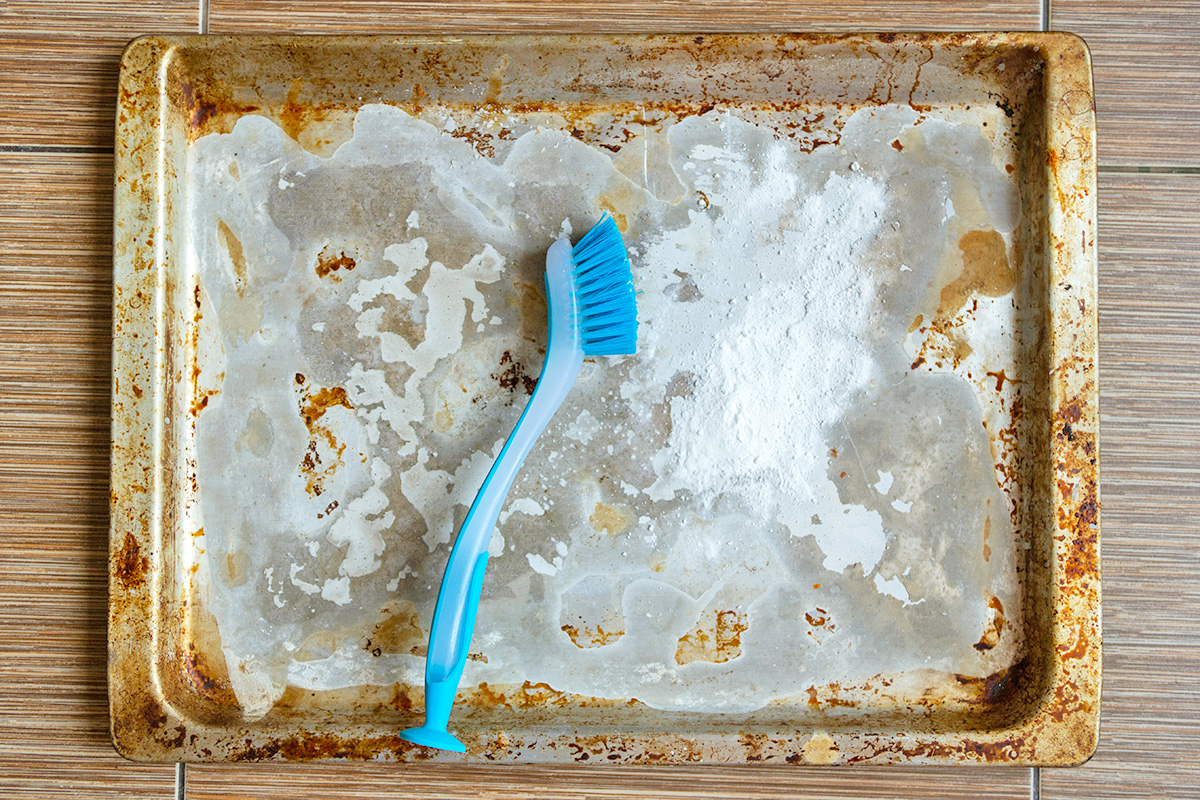A baking sheet is an essential piece of cookware that every kitchen should have. You can use it for a variety of tasks, including baking cookies, roasting vegetables, and arranging ingredients for mise en place. But as a kitchen workhorse, it won’t look new forever. With consistent use, you’re bound to get some buildup or…
How To Clean Baking Sheets
When soap and water aren’t doing the trick, one of the easiest ways to deep clean a baking sheet is using baking soda and hydrogen peroxide.
It’s best to do this in your sink, bathtub, or plastic dish tub to make cleanup easier. First, take your baking soda and sprinkle it generously on the pan until the entire surface is covered. Second, carefully pour hydrogen peroxide over the baking sheet, enough for it to form a thick paste. Use your fingers or a dish brush to disperse the paste, coating the baking sheet evenly.
You might notice some fizzing or bubbling, but this is just oxygen being released as the baking soda and hydrogen peroxide react. Let it sit overnight, or at least eight hours, and the paste will work its magic to help loosen and lift any buildup and marks.
When the time is up, use a plastic scraper to remove the residue and toss the gunk in the trash can. If you don’t have a scraper, you can use a ball of aluminum foil to scrub away any remnants on aluminum or steel baking sheets. However, you should avoid using aluminum foil on nonstick surfaces, as it may damage the coating.
More from our network
House Outlook is part of Optimism, which publishes content that uplifts, informs, and inspires.
Next, wash the sheet pan with warm water and soap. If you’re dealing with stubborn buildup and scorching, use a scrubbing sponge. While some elbow grease might be needed for tough spots, the results are well worth the effort.
If you want to be extra cautious and see how your sheet pan will react to this hack, conduct a spot test on the back of the sheet pan first. We recommend using a 3% concentration of hydrogen peroxide, as it’s gentler on surfaces yet effective for cleaning purposes.















